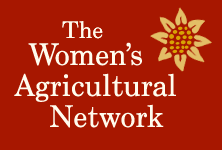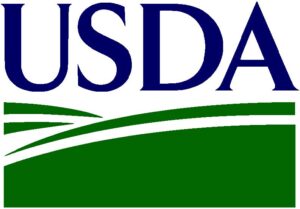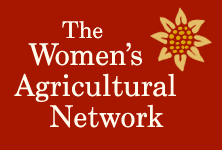For most produce farmers, crop planning is done and the planting has begun (though still in the greenhouse for most Vermonters!). But have you planned to support the creatures that can make or break your yields? Well, farm workers could be on this list, but the creatures I’m talking about are pollinators– specifically the bee family. It turns out that 30% of food crops require a pollinator, and bees are the best pollinators out there. Recently, John Hayden from The Farm Between in Jeffersonville, VT shared information and strategies for encouraging native pollinators on farm landscapes in a UVM Extension New Farmer Project webinar. All New Farmer webinars are recorded and accessible in the webinar archive.
the greenhouse for most Vermonters!). But have you planned to support the creatures that can make or break your yields? Well, farm workers could be on this list, but the creatures I’m talking about are pollinators– specifically the bee family. It turns out that 30% of food crops require a pollinator, and bees are the best pollinators out there. Recently, John Hayden from The Farm Between in Jeffersonville, VT shared information and strategies for encouraging native pollinators on farm landscapes in a UVM Extension New Farmer Project webinar. All New Farmer webinars are recorded and accessible in the webinar archive.
So here are three things you can do this year to start supporting these important farm workers throughout the season, so they’ll keep turning up for work each Spring.
1. Identify food shortages.
While we rely on pollinators when our cultivated crops are in bloom, if you want them to 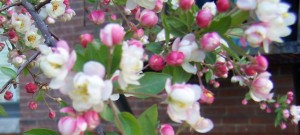 turn up for work, you need to make sure they have a season long supply of food. This year, observe when cultivated and wild species are in bloom on your property, and identify any time periods when there is a gap in the pollinator food supply (nectar and pollen). Then visit the Lady Bird Johnson Wildlife Center site which has a searchable database of native plants that you can sort by bloom time, soil type and sun exposure. Find suppliers of these plants on the Xerces Society for Invetebrate Conservation site.
turn up for work, you need to make sure they have a season long supply of food. This year, observe when cultivated and wild species are in bloom on your property, and identify any time periods when there is a gap in the pollinator food supply (nectar and pollen). Then visit the Lady Bird Johnson Wildlife Center site which has a searchable database of native plants that you can sort by bloom time, soil type and sun exposure. Find suppliers of these plants on the Xerces Society for Invetebrate Conservation site.
2. Time you mowing; careful with your spraying.
Hayden encourages farmers to “soften” their eyes when looking at what are traditionally considered weed species. Dandelions, milkweed, and others are excellent food for pollinators. Time your mowing to happen after the flowering of these pollinator delectables. 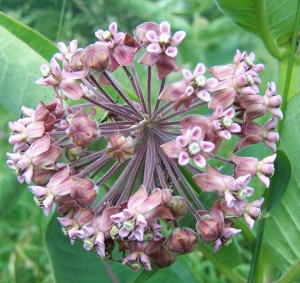 If you spray, don’t spray when the crop or neighboring plants are in flower. Pesticides and herbicides are significant contributors to the declining numbers of pollinators. Even OMRI certified organic sprays, such as spinosad and neem products, can be harmful to pollinators.
If you spray, don’t spray when the crop or neighboring plants are in flower. Pesticides and herbicides are significant contributors to the declining numbers of pollinators. Even OMRI certified organic sprays, such as spinosad and neem products, can be harmful to pollinators.
3. Make a home.
Bees need safe places to nest, rear young and over winter. Piles of brush, bare and sandy south facing soil, and wood with 6 inch deep holes bored throughout are a few examples of attractive bee real estate. Learn more 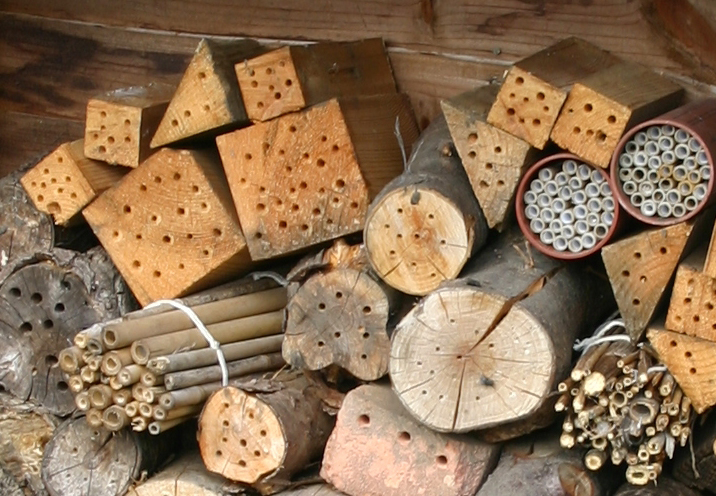 about making a home for your insect labor force in this Xerces Society fact sheet Nests for Native Bees. Or look at the many examples, such as the picture on the left, on the Treasure Coast Beekeepers website.
about making a home for your insect labor force in this Xerces Society fact sheet Nests for Native Bees. Or look at the many examples, such as the picture on the left, on the Treasure Coast Beekeepers website.
There is much more to learn, and a great place to start would be to watch the recording of the John Hayden’s one-hour webinar, Enhancing Native Pollinator Populations on Farms. The Xerces Society is also a great resource, providing regional information on pollinator species. Whatever you do, don’t forget this sex legged workforce on your farm!

